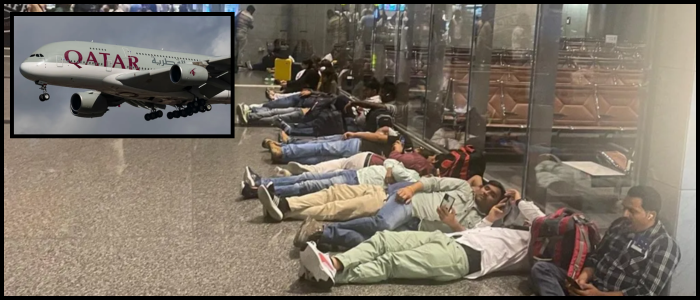A little more than a dozen airlines cancelled or diverted flights as the tension grew. Air India grounded all flights to the Middle East, the east coast of North America and Europe. Japan Airlines cancelled flights between Tokyo and Doha.
These hubs, including Doha, Dubai and Abu Dhabi, are key stopovers for many travellers en route between Europe, Asia, and Australia. Thousands have been left stranded, or facing lengthy delays as a result of the disruptions.
Key Airspace Corridors Shut Down by Conflict
The crisis escalated when Iran launched missiles against a United States military base in Qatar, in response to American strikes on Iranian nuclear installations. In retaliation, Qatar temporarily shuttered its airspace. The ripple effect across the global aviation network has been far-reaching.
Several countries, including Iran, Iraq, Lebanon, Syria and Jordan, now have closed or limited airspace. This has resulted in airlines rerouting flight paths over Turkey or Saudi Arabia, drastically extending flight times and costs.
The Asia-Europe corridor is usually used by about 1,400 commercial flights a day, experts say. Shutting down major flight paths has cut into available airspace, creating delays, outright cancellations and more fuel use.
Airlines and Travelers Prepare for More Chaos
Aviation experts say the disruption could get worse if hostilities continue. "Disruption spreads like wildfire – it's inevitable with the interconnected positions planes fly," consultant Tim Atkinson said. John Strickland, another aviation analyst, also raised further potential concerns including crew availability, safety issues and cost due to longer flight paths.
Meanwhile, governments have warned against flying to affected areas, heaping pressure on airlines and passengers to change plans. In one of the most unpredictable times for the industry, some airlines may now choose daily to fly specific routes based on the latest developments.
The situation has also raised fears over potential mid-air incidents, which past tragedies — such as the 2014 downing of Malaysia Airlines Flight 17 — have seen airlines steer clear of conflict zones. With Russian and Ukrainian airspace already closed off, significant air traffic around the world was already being diverted over the Middle East before the recent escalation. Now, that area is increasingly dangerous and crowded as well.
Top

Israel-Iran Conflict Sparks Major Air Travel Disruptions

Air travel in the Middle East has as a result been paralysed, with flights being cancelled, while there are reports that many Israelis are fleeing the country. Large airports in the region were closed on Monday over security fears and missile threats, suspended flights and cancelled others, including Hamad International Airport in Qatar and Dubai International Airport in the UAE.











